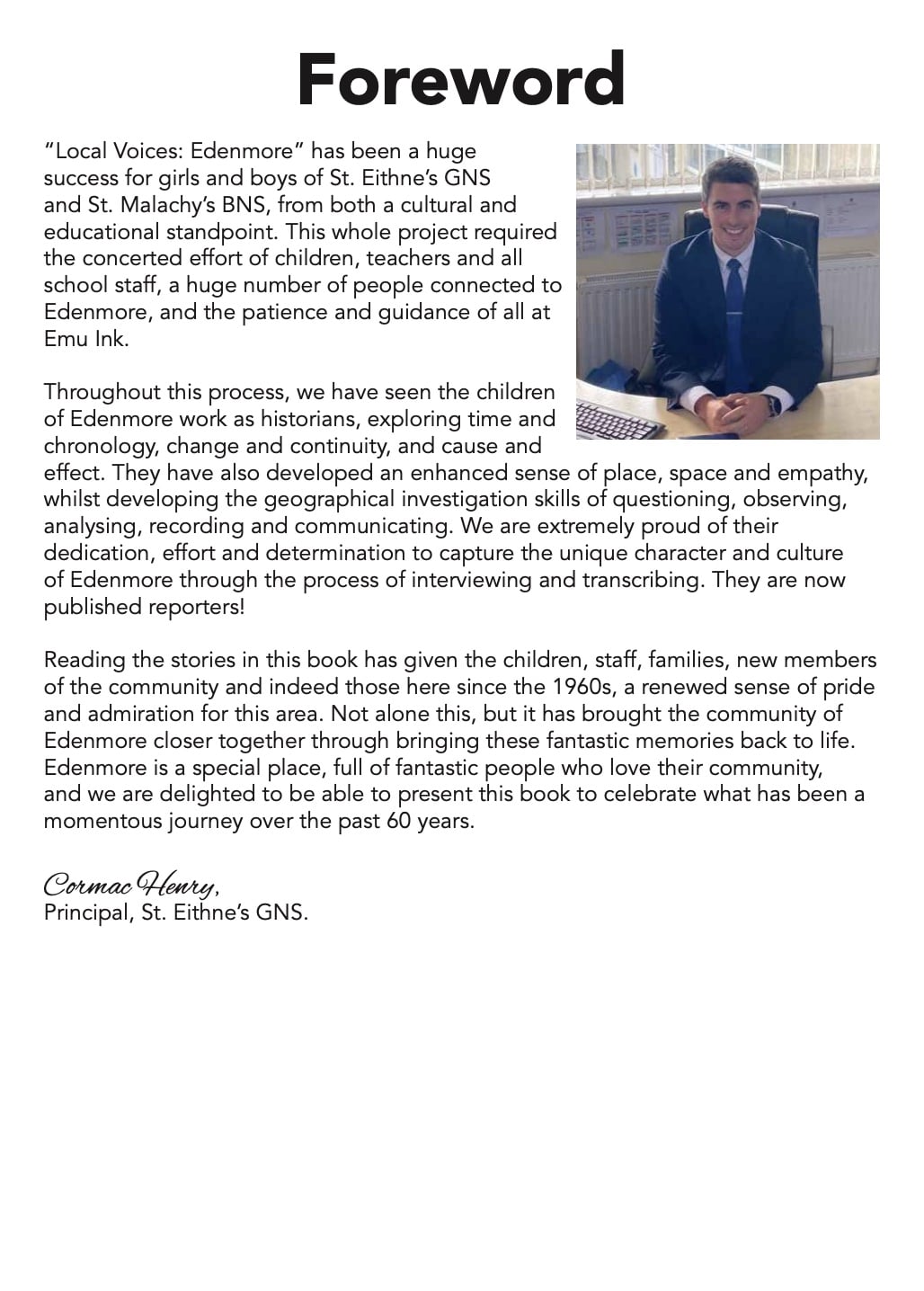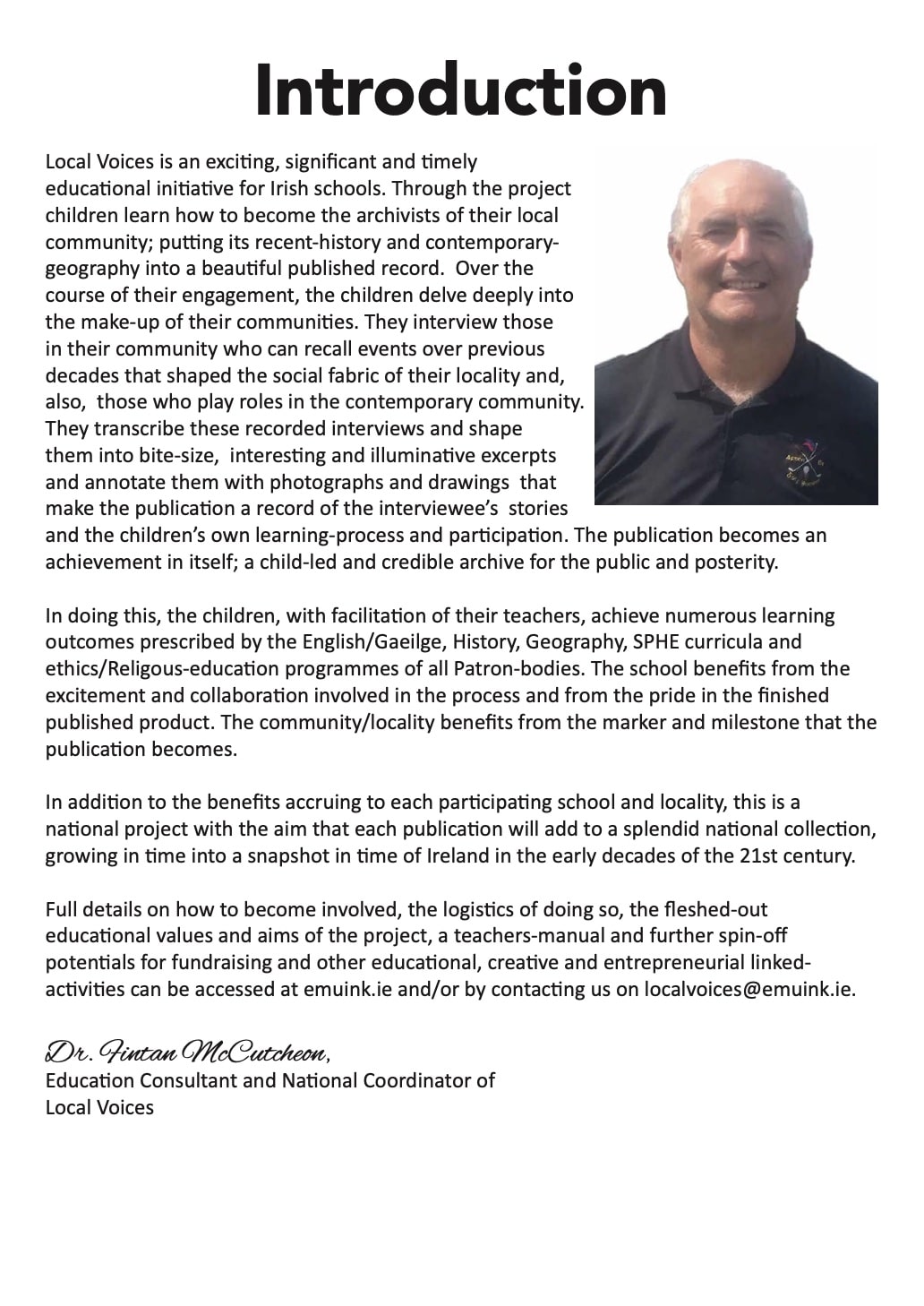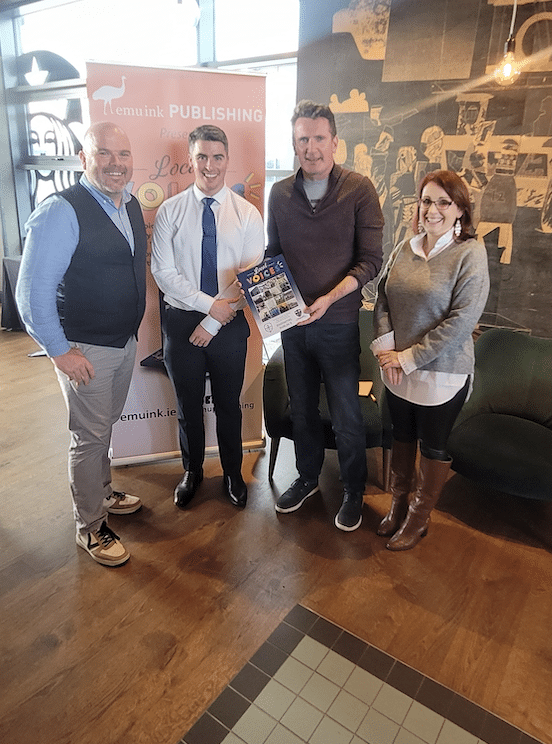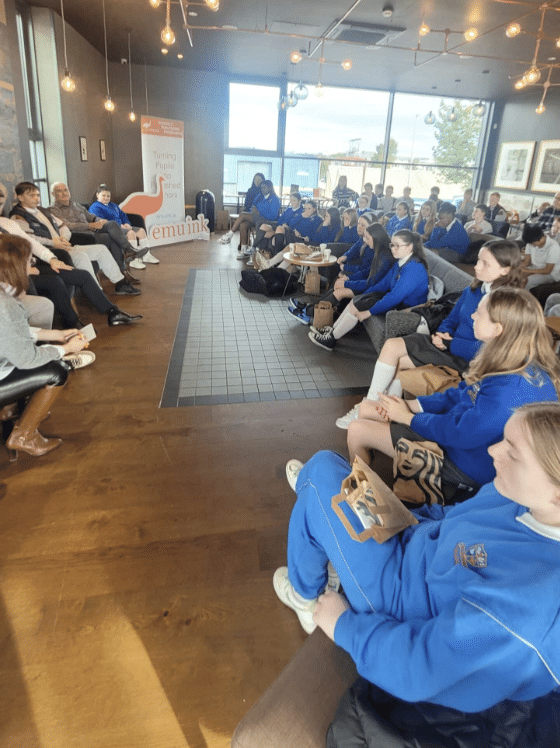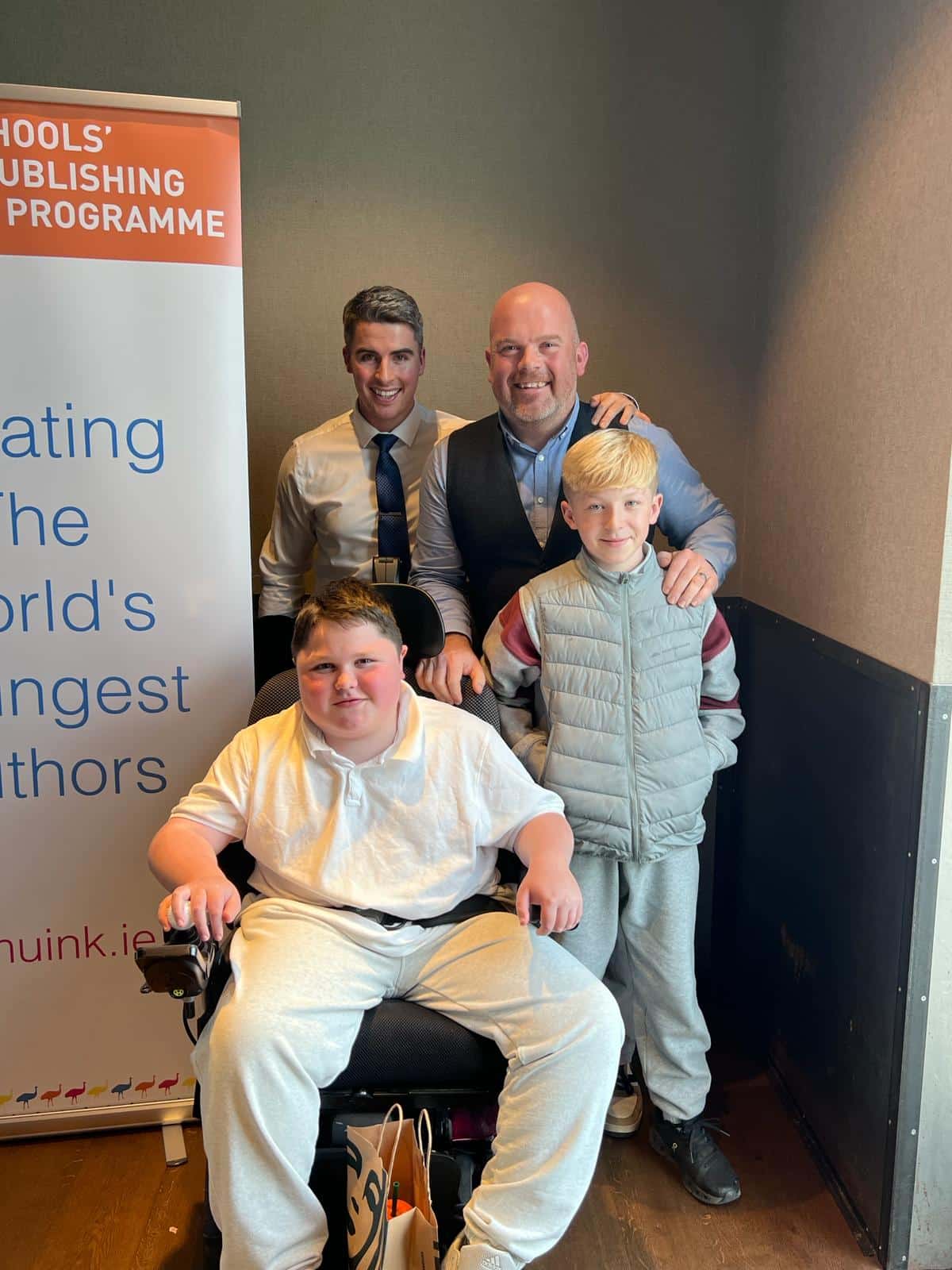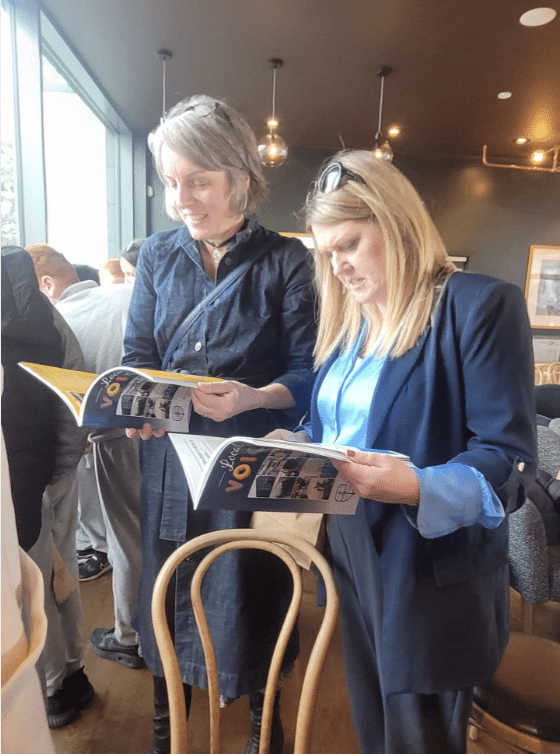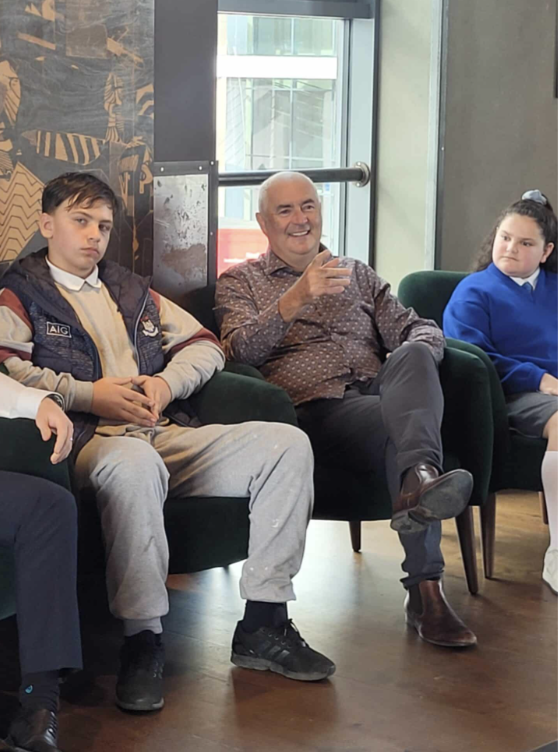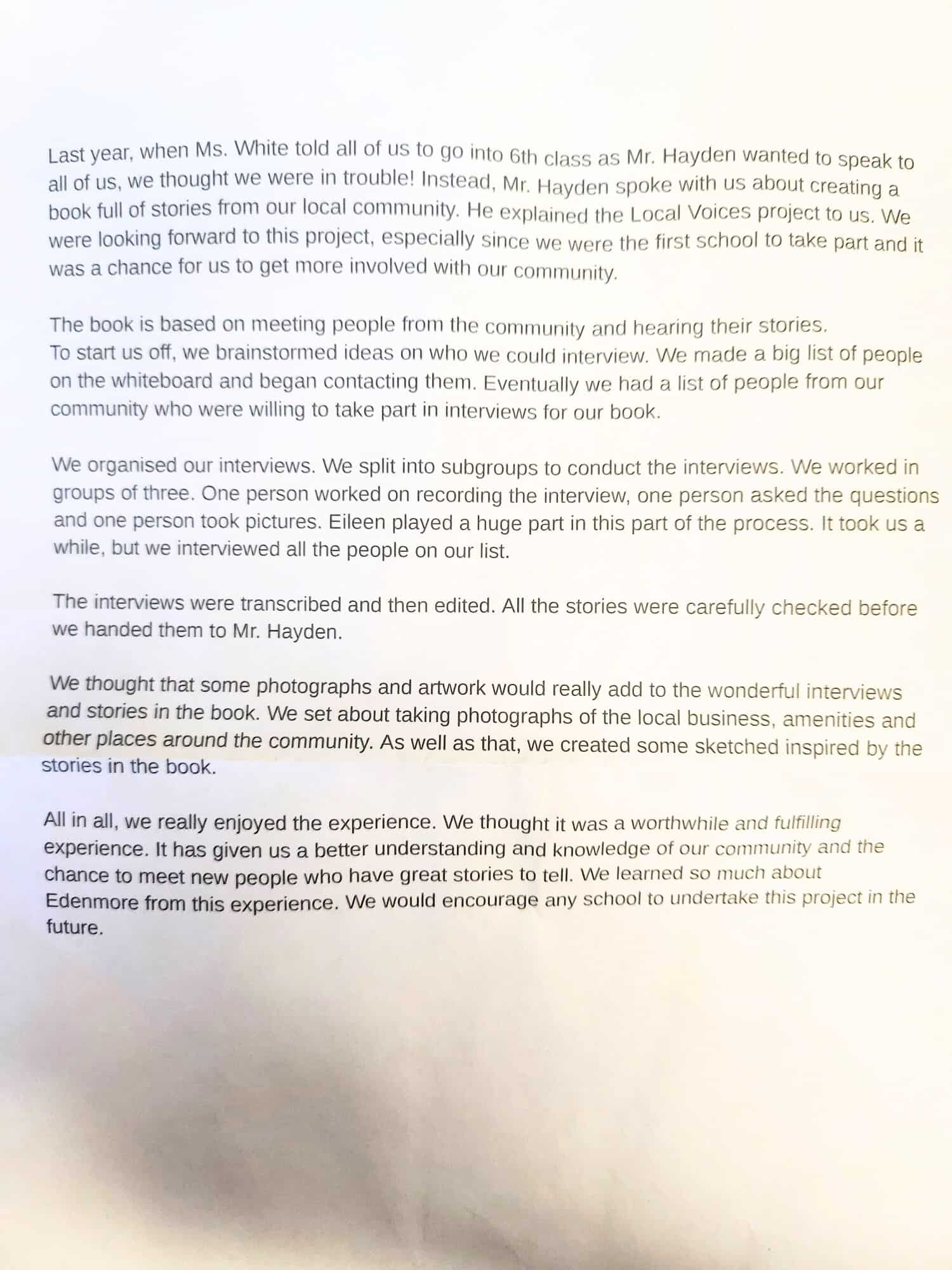
Local voices is an exciting, significant and timely educational initiative for Irish schools. Through the project children learn how to become the archivists of their local community; putting its recent history and contemporary geography into a beautiful, published record.
Local Voices allows pupils to become the researchers, interviewers and authors of their own historical book. The pupils undertake an examination of the recent history and contemporary geography of their locality, interview locals from their community, and transcribe these interviews for the book – adding new and historical photographs, supporting artwork and relevant newspaper clippings. In undertaking this project, the children develop a rich sense of place in their locality and pride in their community. The publication becomes a great source of pride to the school and the community; and a rich resource for future local studies and citizenship education.
Local Voices Sample Spread
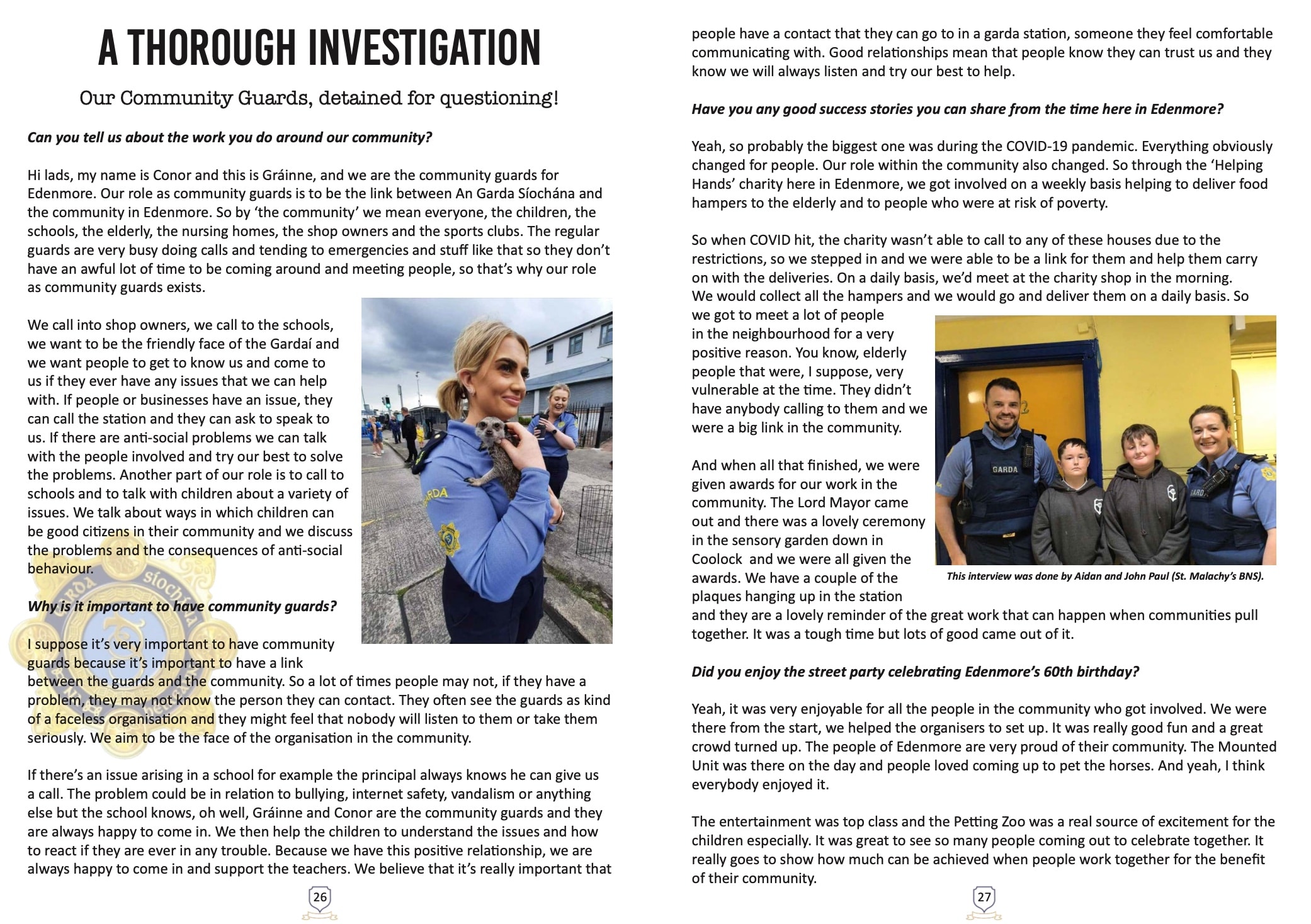
The idea for ‘Local Voices’ was conceived with the aim of bridging generational gaps and fostering a deeper connection to local history and geography. Too often, the stories of communities are forgotten or overlooked, and ‘Local Voices’ seeks to change that narrative. Through this project, children are given the opportunity to become historians and geographers, exploring the rich tapestries of their communities past and present. Over the course of their engagement, the children delve deeply into the make-up of their communities. They interview those in their community who can recall events over previous decades that shaped the social fabric of their locality and, also, those who play roles in their contemporary community.
Local Voices Sample Spread
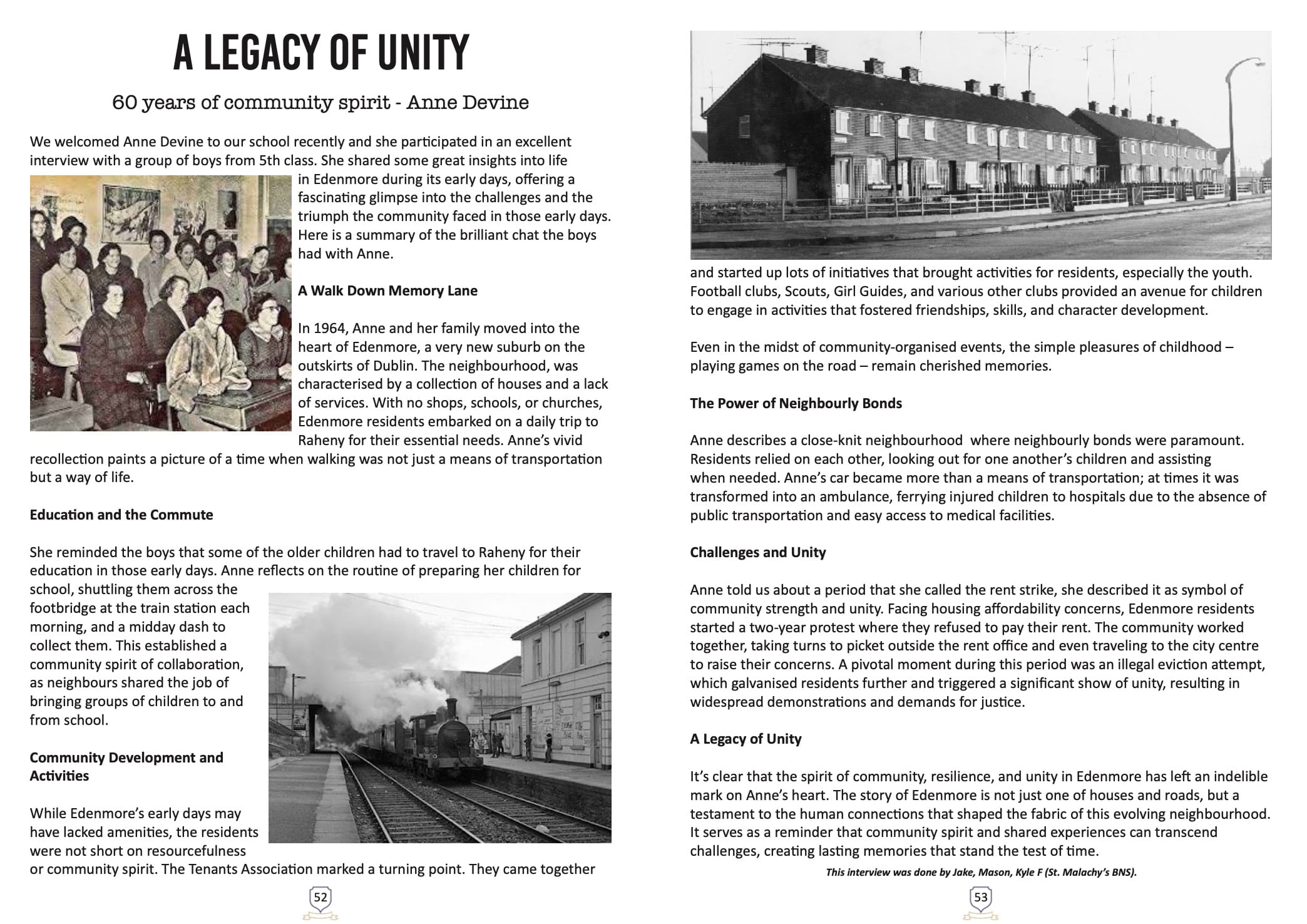
The Local Voices project not only emphasises historical and geographical research, but promotes valuable life skills such as communication, children’s voice, active learning, empathy and teamwork. Through interviews, pupils will learn not only about the past but also about the importance of active listening and understanding diverse perspectives.
Local Voices Launch
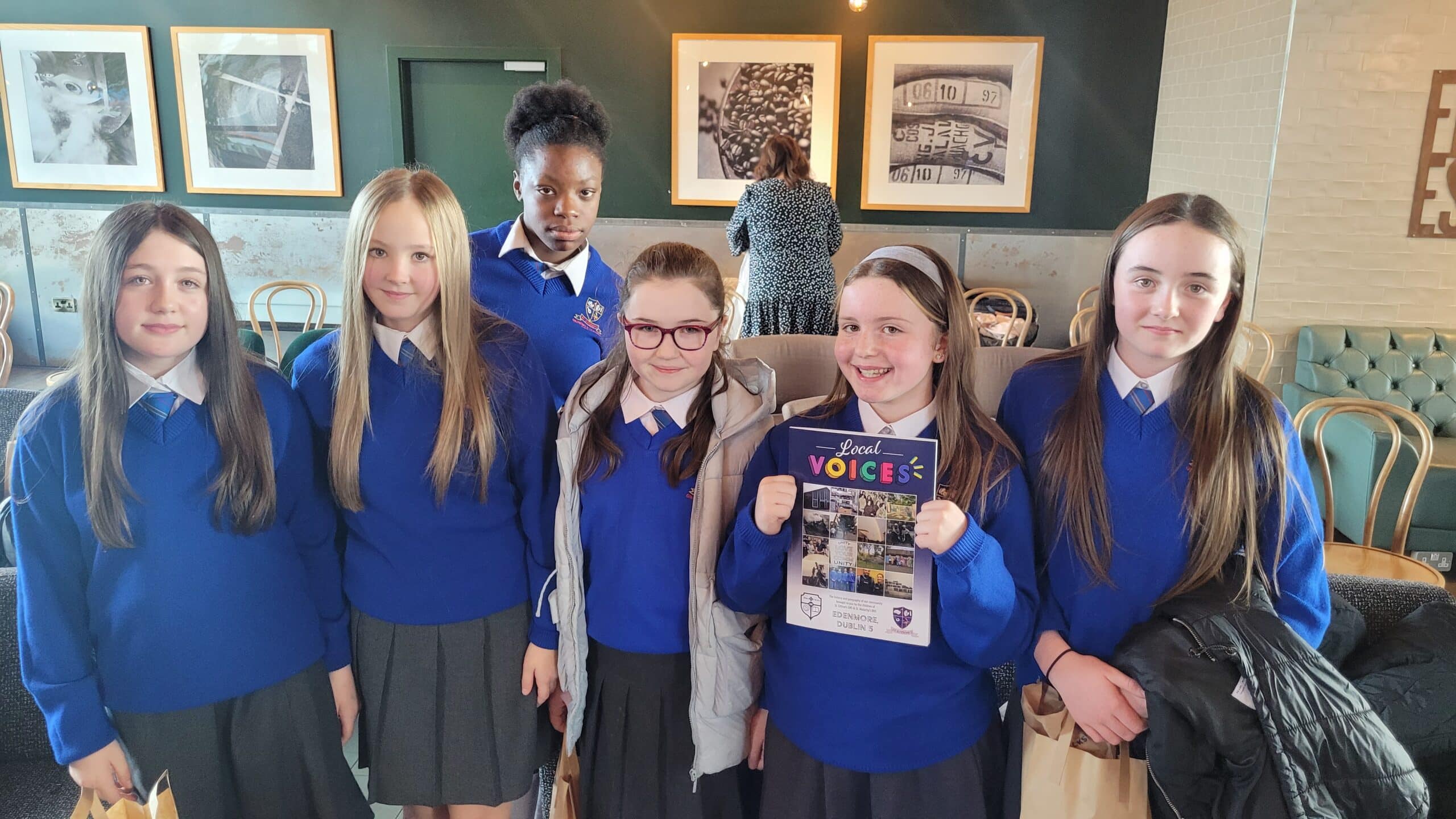
If you are interested in beginning a Local Voices project, please get in touch on info@emuink.ie

